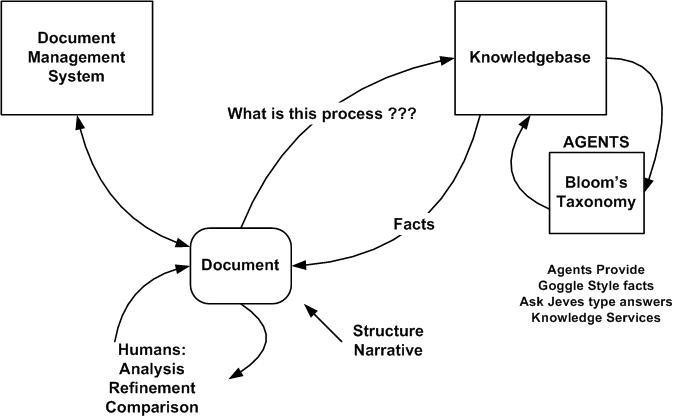
Wick Project Meeting Notes
[03 October 2003]
Location: Wendy's Office
Present:
Summary of Discussion
The traditional view on hypertext design has 3 stages
With web site design methods like WebML, the domain analysis phase will group the major repeating components (database/catalogue) each of which will have many fixed types. For example each category of ‘CD’ will have repeated types of ‘Artists’.
Where as a document has a flow, narrative and structure that is often hierarchical: sections and subsections with headings, paragraphs and tables. The structure can be easily represented in XML.
The WICK project provides ‘cement’ between the traditional lays in hypertext design:
WICK aims to provide the support by writing a methodology and an authoring tool. The methodology not only says how to put things together but how to maintain the narrative and how to ‘warehouse’ the knowledge for use later. The writing tool is to provide knowledge fragments (in context).
A knowledgebase does allow us to capture concrete knowledge:
The Knowledgebase can through appropriate tools (such as Clever agents, inference deduction, subsuming) carry out the areas defined in Blooms taxonomy:
However the Knowledgebase does not allow us to capture the abstract knowledge- the currency of the document. When dealing with documents and the knowledge held within them, they can be classified as having abstract and concrete knowledge.
|
Abstract |
Concrete |
|
|
Ontologies |
Knowledgebase |
|
|
Structure |
Words/content |
|
|
Design |
Production/embodiments |
|
|
Narrative |
? (We require more knowledge here about narrative) |

This raise the following question: What is the difference between a Document and a website?
Domain Analysis gives the constraints/structure which is imposed and fed into the presentation. Documents will have requirements related to the subject matter ( what talked about ) and then the process i.e. proposal writing, structure of and writing each section of AKT review. But what about other documents for example Forms where the knowledge is highly specific compared to other documents were knowledge is reused in creating another paragraph.
From the knowledgebase we have knowledge fragments in which their context is fixed, this little bits of knowledge are added to the document( this can liken to whisking in the context, a McFlurry effect).

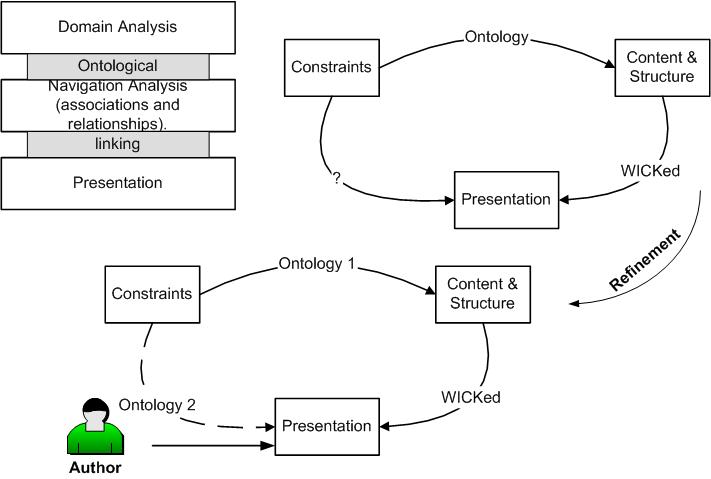
Ontology 1 control the facts i.e Arouna system ‘WICKed’
Ontology 2 is the overall control of the structure
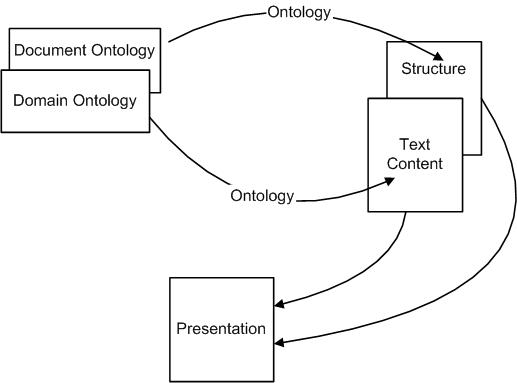
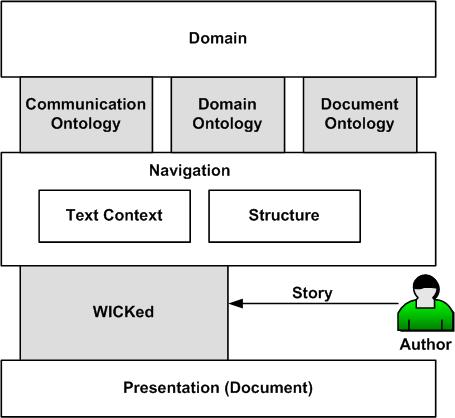
|
Domain Ontologies |
HT Ontology |
|
Document ontology |
Consists of Subsections and knowledge fragments Constraints |
|
Subject ontology |
EPSRC Research Ontology |
Higher levels of Knowledge.
Knowledge is out there:- we not involved specifically in acquiring this knowledge but may give requirements. We want to use it in for example writing a research proposal, in order to do this we will need an:
We therefore need to rewrite requirements/constraints on terms of KB and Ontologies. Reconstruct the diagram to be:
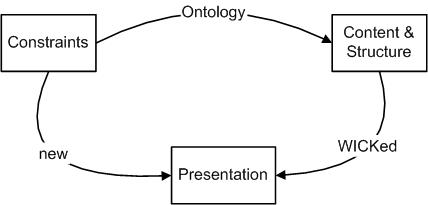
Inside a page will go straight forward knowledge fragments like Band Name, Songs, Albums, Location of gigs, etc.
A page may contain reviews and Band information which is new knowledge. This in turn would include knowledge that is not easy to get. For example, their significant gigs, where they started from, best known songs and albums, etc.
How do people write such apparent free text descriptions?
Below is Arouna’s idea of how WICKed works. For example in writing a research proposal.
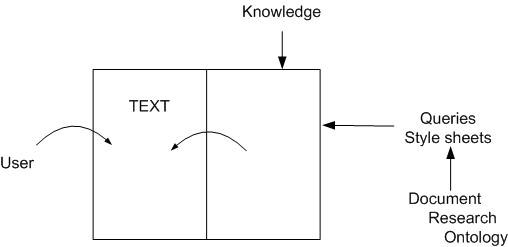
A research proposal is more than just a form, it will also have to have a concept of a work plan. This concept of a work plan
should be in the research or document ontology.
To Do:
Each of these are a different Genre, what are the design rules for each genre?